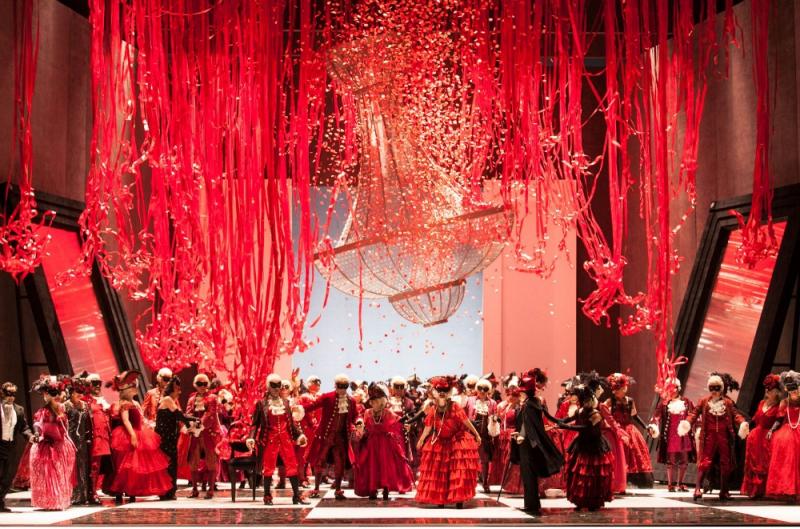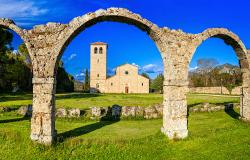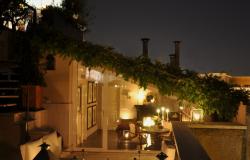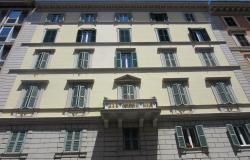BACKGROUND
Un Ballo in Maschera has a complex genesis. The end product is the result of numerous changes, rewrites, and no doubt, one or two headaches for Verdi and the text writer, Antonio Somma. The story begins when Verdi's eye was caught by a libretto by French playwright, Eugene Scribe. Scribe's libretto revolved around the death of King Gustav III of Sweden at a masked ball in Stockholm in 1792. Scribe's libretto was a curious mix of fact and fiction. While the names of key personnel were historical figures such as Gustav, Anckarström (the King's secretary and confidante) and Ulrica Arfvidsson (a fortune teller) were included, there were also new characters and fictional aspects such as a romance between Gustav and Anckarström's wife, Amelia. The latter served as the cause of Gustav's murder, as opposed to Anckarström's motivation of hatred for the King. Verdi and Somma began work on a new opera, tentatively called Gustavo III in 1857. However, a number of ordered changes were imposed after initial submission. The action should be altered to an age pre-Christian; the conspirators should not be motivated by power; and most significantly, the character of Gustav should be changed. The King became a Duke for the new draft, Una vendetta in domino with the new locale of Stethin in Northern Germany.

Real life events were to cause a second, radical rewrite. In January 1858, an assassination attempt was made on Emperor Napoleon III in Paris by Felice Orsini and two other Italian men. A new overhaul was demanded, and a frustrated Verdi refused to make changes such as a new time and place of 14th century Florence and a new title, Adelia degli Adimari. The situation reached the point where Verdi contested these changes in a commercial court - ultimately, the court ruled in Verdi's favour. A new version, now changed to the name of Gustavo III again, was sent to the impressario of Teatro Apollo, Jacovacci, and although Jacovacci warned of many changes from the censors, in fact the only main change was the location to be switched to outside Europe. With Boston selected, a new version was worked out by Verdi and Somma that was now based on Una Vendetta in domino. The opera was now called Un ballo in maschera and also featured different character names. The version was given the green light, and in 1859, it was curtain up...
FIRST PERFORMED
17th February 1859 at the Teatro Apollo in Rome.
NOTABLE PERFORMANCES
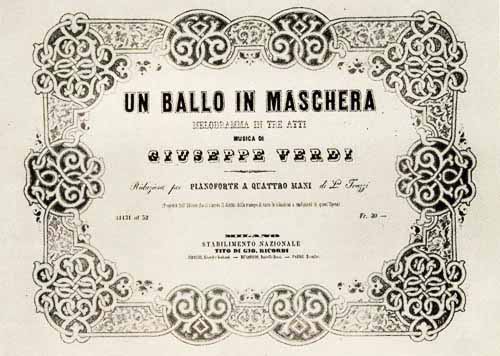
17th February 1859: Teatro Apollo, Rome 13th January 1861: Théâtre des Italiens, Paris 11th February 1861: Academy Of Music, New York 15th June 1861: United Kingdom 27th June 1861: Royal Opera House, Royal Italian Opera 30th December 1889: Metropolitan Opera House
THE PLOT

The three act tragedy begins with preparations for a masked ball . Riccardo, the Earl of Warwick and Governor of Boston is particularly pleased that Amelia (the wife of his secretary, friend and confidante, Renato) is a guest - despite Renato, Riccardo is secretly in love with Amelia. Riccardo's mood is dampened by warnings of a conspiracy against him, although he brushes off such claims. A complaint is brought to Riccardo concerning a fortune teller, Ulrica, who is accused of witchcraft. Riccardo's page, Oscar defends Ulrica, and determined to see for himself, Riccardo arranges for himself and a group of court members to visit Ulrica incognito. Disguised as a fisherman, Riccardo spies Amelia paying a visit to Ulrica, lamenting her love for the Earl and requesting a way to a peaceful heart. Ulrica tells her to obtain a herb that contains special powers. After Amelia has left, Riccardo requests to have his fortune told by Ulrica. She obliges, but warns him that he will meet death at the fingers of the next man to shake him by the hand. It's Renato. The ominous warning is not helped after Riccardo meets Amelia on the outskirts of town. After both express their love for each other, Riccardo is met by Renato who warns him that the conspirators are on his heels. Riccardo asks Renato to escort the disguised and veiled Amelia back into town, but during a tussle with the conspirators, Amelia's veil comes away - leading Renato to assume that Riccardo and Amelia are in love with each other. A furious Renato threatens to kill his wife, but after Amelia pleads her innocence, Renato's murderous intentions turn towards his former friend. Along with the leaders of the conspiracy, Samuel and Tom, Renato arranges the assassination of Riccardo at the masked ball. After drawing lots, Renato is to be the chosen killer. As the ball takes place, Riccardo renounces his love for Amelia and arranges to send her and Renato to England. It's too late for Riccardo though, as Renato stabs him. As his life ebbs away, Riccardo tells Renato that Amelia had been faithful to her marriage vows and had not acted upon her feelings. Saying goodbye to his friends and country, and even pardoning the plotters, Riccardo dies.
THE CHARACTERS

* Riccardo - Earl Of Warwick and Governor of Boston (Originally, Gustav, King of Sweden). * Renato - Riccardo's secretary, confidante and friend. Husband to Amelia (Originally, Count Anckarström). * Amelia - Wife of Renato. Faces a dilemma between duty to her husband and love for Riccardo (Originally, the wife of Anckarström). * Ulrica - Fortune teller. * Oscar - Page of Riccardo. * Samuel and Tom - Leaders of the conspiracy against Riccardo.
ANALYSIS

Despite its long, complicated genesis, Un ballo in maschera still comes together to provide a memorable piece. It includes many of the themes prevalent in Verdi's works. There is the doomed love affair - in this case, Riccardo's feelings for his friend's wife result in his untimely demise. Following on from this, it's a fatal misunderstanding on Renato's part that causes him to commit the act of murder. Convinced that his master is to embark on a love affair with Amelia, he is resolved to kill him in cold blood - the irony is, however, that Riccardo is actually putting his feelings for Amelia aside, as he plans to send both Amelia and Renato away. It's that typical human passion that again manifests itself in Un ballo in maschera. Renato's feelings of jealousy and new hatred towards his master as he imagines himself to be the wronged party in a Riccardo/Amelia affair (the title of Act 3's aria translates as It Was You Who Stained This Soul). Riccardo's nobility in that he has to do the right thing, both as a ruler and as a friend. It's another play that ends in a climax worthy of Shakespeare. Misunderstandings and jealousy result in the loss of life that could have been avoided. It's all the more poignant when Riccardo pardons not only his conspirators, but says goodbye to his friends. Musically, there are one or two innovations on Verdi's part. Specifically, two of the characters are given unusual singing ranges. Ulrica the fortune teller sings in a lower contralto register (tying in with her mysterious, ominous profession and her warning of death to Riccardo). Oscar, Riccardo's page, meanwhile, sings in a coloratura soprano, a higher register than normal for a male (this arguably relates to Oscar's youth and lack of experience in the world, not to mention his optimistic nature - such as his defence of the accused Ulrica). Verdi's music also successfully evokes the events taking place in a number of notable ways. The subtle laughter at the end of the second act hints at darker things to come in the finale. The build-up from one voice to five at the start of the third act reflects the various emotions experienced - most notably, the tortured themes of betrayal, guilt and a thirst for revenge. The final act's dance scene also dramatically repeats the same chords, evoking a sense of dread masquerading beneath the glitz and glamour of the ball. Un ballo in maschera stands up very well indeed, considering the rewrites and amendments imposed. It captures the recurring themes of Verdi's works and ties them all together in a sumptuous production tinged with human passion and tragedy.
